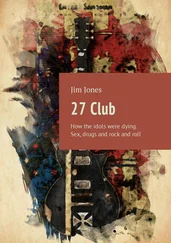My climbing efforts commenced on the day after Christmas, when I scaled and skied two adjacent fourteeners-Castle and Conundrum peaks-twice taking what backcountry guru and guidebook writer Lou Dawson calls “the journey through the valley of death.”
Avalanche exposure increased significantly over the New Year, so by January 9, camped below the north face of the picturesque North Maroon Peak, I had to change my itinerary from the standard route on North Maroon. Instead, I climbed Pyramid Peak by its West Face route, despite a storm that blew dangerous amounts of fresh snow into the steep-faced west amphitheater at 13,800 feet. Avalanche hazard was at volatile levels, waiting for a human trigger named Aron to step onto the wrong part of the slope.
Descending the summit ridge, I contorted my body over my gloved hands, poised on loose mudstone slats, to make a difficult downclimbing maneuver through a fifteen-foot-high band of cliffs. When my grip came loose, I fell four feet to land flat-footed on a three-foot-wide shelf. Wobbling directly above a second cliff, I steadied myself before easing down another ten feet onto the upper perimeter of the wind-loaded amphitheater’s snowfield. From there, it was a heart-stopping descent all the way to treeline. To avoid the unstable zones that had filled in with a foot-thick layer of avalanche-prone snow as I climbed above them, I had to take inefficient deviations from my ascent path. I made a safe return, sometimes pushing snow down onto a slope below me to make it avalanche in a loose slide of spindrift before I continued down myself. I had never taken a fall on a winter climb. I’d been fortunate to land safely-a backward step from the ledge would have sent me on a fast ride into the sweet spot of the bowl, most likely injuring me as I triggered a massive slide-but I was spooked and gave every hazard an extra margin on the way down.
Starting with the experience on Pyramid Peak’s summit ridge, I went on a month-long streak of climbing fourteeners in January, with close calls on all of them. On my approach to Mount of the Holy Cross, I got caught after dark at 13,000 feet in bitterly cold temperatures due to an incorrect route description for traversing Notch Mountain. Bivouacking on a two-foot-wide snow ledge, I was just below the notch that separates the two 13,200-foot summits, but above a sickening drop into a fifteen-hundred-foot-long steep snow couloir. My intent in hunkering down was to replenish my body’s energy with hot Gatorade and instant mashed potatoes. Twelve miles of travel had brought me to the top of the northern summit of Notch Mountain, but without a tent, I was planning to reach a rock-walled shelter on the southern summit before dark. However, deeply drifted snow and the guidebook that had said to traverse the east side of the southern summit, when it meant the west side, had slowed me down and used up all of my energy reserves, as well as my water. By the time I was certain I was headed the wrong way, I was too tapped to regain the notch where I would be on track again.
A finicky fuel-bottle O-ring then nearly cost me everything. Unbeknownst to me, the rubber gasket had gotten pinched at the fuel-line insertion hole, and for five minutes, fuel spilled into the snow when I opened the valve. I unwittingly lost three quarters of my fuel before I figured out why the stove was burning so weakly. I had popped the troublesome O-ring in my mouth and was flattening it out with my tongue when I saw the storm coming in from the west. I knew I had to get to the shelter, but I needed energy first, and without water, I couldn’t eat anything-I had to get the stove working properly. The thought occurred to me then that there are many shapes to the thing that separates life from death. Sometimes it’s obvious: the distance that separates you from a lightning bolt, the seat belt that restrains you when you hit a deer at 80 mph, the actions of a friend whose quick reflexes save you from drowning in the Colorado River. Other times it’s subtle, even imperceptible: the microscopic string of DNA that enables your body to fight off an infection you don’t even know you’ve contracted, a decision to climb a different mountain and thereby miss being hit by a rock that assails the route you aren’t on. We go through life ignoring these subtleties because there are a million things we survive every day without recognizing we were ever at risk. Then we have a close call, and we become acutely aware of what that fraction of an inch or that split second means. I knew my stove was my salvation from the ledge and quite probably the link that would get me off the mountain. I had to fix the fuel-line seal.
Extracting the three-millimeter O-ring from my mouth, I examined the deformed section. While I was handling it, my deteriorated state caused me to fumble the critical piece into the dark. One of those subtle lifelines had just become terrifyingly obvious. I was horrified to think I had bobbled the O-ring off the ledge. With my headlamp illuminating the ground, I sifted my bare fingers through the concealing snow and found the little black rubber seal. Five minutes later, the stove roared as I melted snow, and I knew I had a fighting chance.
The longer I struggled through the storm, the more difficult the traverse got. I couldn’t remove my goggles because of the blinding wind and blowing snow, but nor could I see in the dark with the mirrored lenses eliminating more than half of the visible light from my headlamp. I left my goggles on but lifted them periodically to hunt for the most efficient route. An hour into the steep traverse, with unseen slopes dropping away to my right, I crossed at the top of a slab-laden snowfield below an ice-plastered rock cliff in fifteen-foot visibility. I tried moving up the rock but made only forty feet of progress before the technical nature of the terrain overcame my confidence. I backed off to find an easier way. Though I had grown accustomed to scrambling up complex terrain in my flexible-toed telemark ski boots, my skills weren’t up to the challenge of climbing fifth-class vertical ground in the dark with a heavy pack. Another hour of searching through the cliffs for a reasonable exit onto the southern summit wore me down, and by the time I reached the rock shelter and found it filled with snow, I was too exhausted to do any shoveling. I laid out my sleeping bag, crawled in, and passed out.
The next morning, the storm had passed, but I doubted my chances at twice traversing the Halo Ridge of Mount Holy Cross. Because of the route’s layout, I would have to climb over the three intermediary high points-each above 13,200 feet-to reach the main summit, then return over those same subpeaks. Back at the shelter, I would have to reverse the entire approach over both summits of Notch Mountain to get back to my vehicle. In sum, there were nine peaks above 13,000 feet that I would have to climb before returning to my skis and the nine-mile descent. Due to my stove fiasco the previous night, I had only enough fuel to melt two liters’ worth of water, less than half of what I would need. Without enough water, I wouldn’t be able to prepare my oatmeal and protein shake for breakfast, and would therefore have to ration my five candy bars-my only remaining ready-to-eat food, and again, only half of what I needed-until I returned to my truck.
Outside, the calm sunny weather and dramatic surroundings infused me with confidence. Before I knew it, in five hours, I had rounded the halo to arrive at the top of Mount Holy Cross, where I could easily discern the ski areas and major summits of the Elk Range surrounding Aspen to the southwest. On the climb, I had to rely on fitness, acclimatization, and pacing to keep from spiking my energy demands. I found if I could avoid unnecessary power moves and maintain a consistent output, my endurance would get me through. An hour after topping out, I was retracing my telemark boot prints along the gentle ridge that would take me back to the boulder field of Holy Cross’s southern satellite summit. At a horseshoe-shaped set of rocks about twenty feet to the windward side of a steeply dropping cornice, I stepped into a shallow post-hole I’d made on my ascent.
Читать дальше












